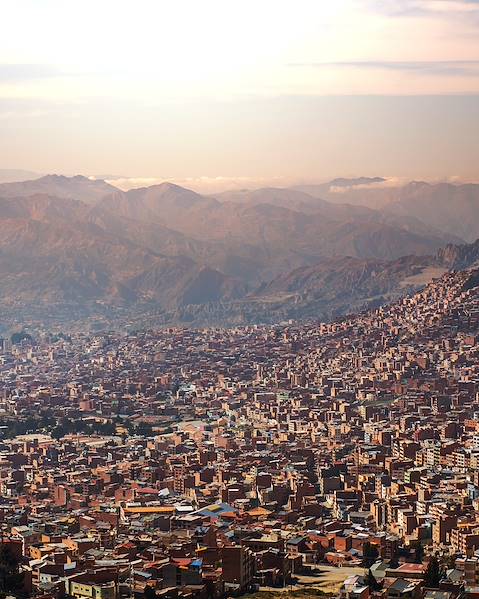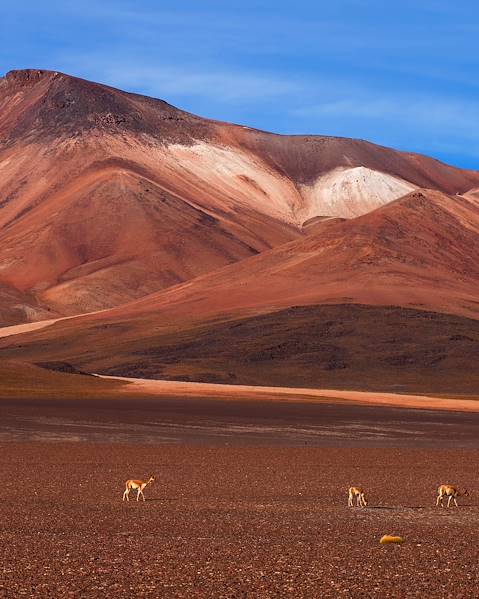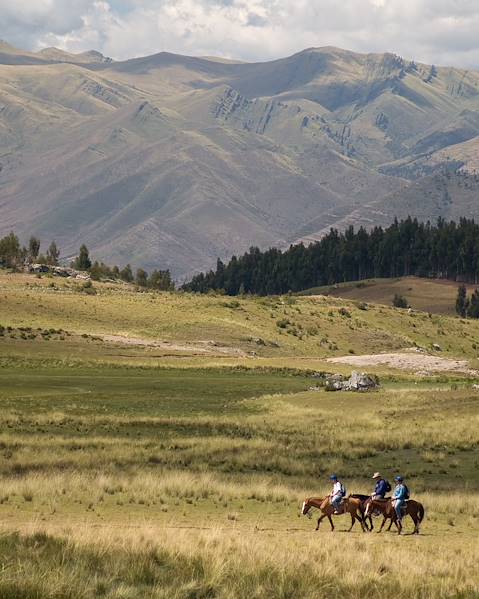Like most of its South American neighbours, Bolivia’s climate varies according to altitude and season, making it a great year-round destination. However, most agree that the best time to visit Bolivia is between May and October, when the dry weather brings sapphire skies and less travel disruption. In May, you can enjoy the lush green vegetation left by the April rains, while October sees spring on the horizon, with the weather starting to warm up. Whether you are marvelling at the surreal salt flats, hiking in the Andes, exploring the Amazon or checking out the world's highest capital city, read our expert guide to what to expect in Bolivia in each month of the year.
January: Heading East
January is one of the wettest months of the year in Bolivia, so try to be flexible with your plans as landslides and road closures are common. Consider a stroll around Santa Cruz de la Sierra, which enjoys relatively pleasant temperatures with reasonable rainfall. On the other hand, avoid the Amazon region where the heat, rain and humidity can be hard to bear. Similarly, skip the Andes and the Altiplano where it can be bitingly cold. Travellers looking for milder temperatures can take refuge in La Paz, which celebrates one of its biggest festivals in January, as locals shop for miniature items to offer as gifts to honour the Andean god, Ekeko.
February: Happy Valleys
February is not recommended for visiting the Andean and Altiplano regions, due to intense thunderstorms and snowfall in places. Instead, head for the valleys to enjoy the stunning nature and swimming in deep, clear rivers.
March: Rainy Season Draws to a Close
Salar de Uyuni, the largest salt desert in the world, enjoys better conditions than the rest of the Andes and the Bolivian Altiplano, so March is a good time to visit this spectacular setting. Just note that - whatever the time of year - temperatures drop dramatically overnight. The rest of the region is very cool in the morning and pleasantly mild during the day. And although it’s the end of the wet season, snowfall and thunderstorms can occur. The Amazon awakens in March, even if the rain continues, but it’s very humid so it’s less than ideal for travellers who struggle in the heat. As for the valleys, the temperatures continue to climb, and visitors can enjoy an increasing number of sunny days as the showers gradually disappear, giving way to spring-like weather.
April: The Dry Season Starts
April marks the beginning of a revival in Bolivia, when the rains gradually retreat and give way to a much milder climate. The Amazon offers a better setting for walkers, thanks to the sharp decrease in rainfall, and the heat is more bearable because it is less humid and increasingly sunny. Our advice is to opt for authentic Trinidad as the starting point for your adventures. The drop in temperatures is also felt in the valleys, which have lower rainfall and more sunny spells. La Paz is not recommended at this time of year, because snow and storms are frequent, but it’s a good time to visit the rest of the region, as well as the Andes where the weather improves slightly.
May: Welcome Sun
The dry season is well and truly underway come May, but the temperatures drop because it is the beginning of the austral winter. So pack your thermals, especially in the Altiplano and the Andes, La Paz and Lake Titicaca. Afterall, nothing beats the striking spectacle of snow-capped mountains gleaming in the bright sunshine. May is also a great month to visit the Amazon, as the Pampas and the Bolivian rainforest enjoy relatively dry conditions and little rainfall. The Oriente is also good in May, apart from Concepción which remains rainy, and the valleys are very pleasant at this time of year, despite fairly cool mornings.
June: Choose Your Destination Wisely
Even if June is one of the most popular months to visit the Oriente, take into account the temperature changes, which can range from 10 to 30°C. The Amazon, meanwhile, enjoys mostly bright and dry days, with occasional rain. This is a good time to enjoy the lush jungle and meet amazing animals of all kinds. Nature lovers should forget the Altiplano and the Andes in June, as the mornings are freezing and the risk of snow and thunderstorms is high.
July: Diversity is the Key
The Altiplano and the Andes are dry in July. Like any self-respecting Bolivian, pack light clothes for daytime, when it’s 15 to 20°C on average, then pop on a warm alpaca sweater at night. Carrasco and Torotoro, as well as Cochabamba and the intermediate valleys, are among the best places to visit in July because it’s generally warm and sunny, whereas the Amazon swelters in stifling heat.
August: Good Weather Prevails
The Altiplano is very cold in August, when temperatures rarely exceed 12°C and can plummet drastically. If you’re hiking, head elsewhere, for example to the Noel Kempff Mercado National Park, where it’s between 19 and 31°C and the sun is shining. In the valleys, the nights and mornings are cold but spring temperatures kicks in during the day.
September: Partial Return of the Rains
Most of the Altiplano experiences a mild spell in September, apart from La Paz and Lake Titicaca which are still icy cold. This is a good time of year to set sail for Potosi, the highest colonial city in the world. In the valleys, the rain is light and it’s beginning to warm up. Choose your visiting hours if you’re heading to the Oriente, because it can be very hot when the sun is at its strongest (sometimes up to 34°C), but unlike the Amazon where the showers rage, it’s generally dry.
October: Peak Heat
The heat reigns supreme across most of the country in October, particularly in the Amazon. You can still visit the rainforest at this time of year, just pack light layers to protect you from the frequent downpours. Expect rain in the Oriente too and save yourself the journey to the Andes and the Altiplano where the cold and storms have set up camp. The valleys is the best area to visit in October as it’s mild and mostly sunny, although thunderstorms occur from time to time. Our favourite stop is the Machia Ecotourism Park, which is full of curious monkeys and exotic birds.
November: Good All Over
November is perhaps the best time to visit Bolivia. It’s getting milder in the Andes and the Altiplano and there is still time to visit the Amazon rainforest or the pampas before the rains kick in. The valleys are also ideal, offering all kinds of outdoor activities. Just take shelter from the afternoon sun if you go to the Oriente, and pack a mac too.
December: A Month To Miss?
In all honesty, December is not the best month to visit Bolivia. The Oriente is the probably best place to go as the heat isn’t too oppressive, but expect frequent showers. We don’t recommend visiting the valleys because even if the temperatures are mild, thunderstorms are commonplace. It’s the same for the Amazon, where the heat and humidity are staging a comeback. The Andes and the Altiplano are subject to heavy thunderstorms and snowfall, while hurricanes rage around Lake Titicaca.

















